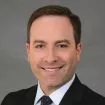Welcome to Debt Download, Goodwin's monthly newsletter covering what you need to know in the leveraged finance market. Is the LBO market on the road to recovery? Read on to find out.
Note: Some of the links in this newsletter may redirect you to a subscription-only resource.
In the News
- The loan market remained relatively quiet in November 2023, with net issuance of broadly syndicated loans (BSLs) down to $12.3 billion from $12.7 billion in October, but still significantly higher than one year earlier ($4 billion in November 2022). Private credit loans refinanced $17.69 billion of outstanding BSLs in the three month period ending in November. This is further evidence of private credit's growing dominance in the loan market and competition for deals that historically went to the BSL market, in particular as a result of providing more flexibility to stressed issuers. Institutional lenders committed approximately $264 billion to leveraged loans in 2023, up 22% from 2022, mainly as a result of increased refinancing activity, whereas pro rata loan (i.e., term loan A) volume was 27% lower than last year. M&A activity for the year through the middle of December was just under $70 billion, its lowest level since 2021, and only 35 leveraged buy-outs (LBOs) in the term loan B market were signed through the beginning of December compared to 116 LBOs in the prior year. Notably, this Debtwire report highlights that the 2023 leveraged loan market was one of the weakest in recent years in the Americas, EMEA and Asia-Pacific regions. Refinancings, however, were the fourth highest total on record at $136.2 billion. The average pro forma adjusted total debt multiple averages rose slightly to 4.4x in the trailing three months compared to 4.3x for the third quarter of 2023. Pricing flex for BSLs favored borrowers more than in October, with 18 cuts to 5 increases, and average all-in clearing spreads for single-B new issuances decreased to S+465, down from the seven-month high of S+521 in October.
- Industry leaders are predicting more robust M&A and lending activity in 2024, with Golub Capital's CEO noting that M&A activity has been up while spreads are declining and Goldman Sachs' chief strategist predicting a return of the leveraged buyout in 2024. Sharing the sentiment of these leaders, the majority of respondents to LCD's 2024 edition of the Leveraged Finance Survey expect M&A volume to increase from 2023 levels and leveraged loans in the United States to fare better than high-yield bonds in 2024.
- Notwithstanding the optimism in the loan market for the upcoming year, loan default rates continued to rise in November, up to 3.5% by issuer count for the rolling twelve-month period, the highest level since April 2021, with loan recoveries below their long-term average and distressed exchanges triggering more than 70% of defaults in November. Although a recent S&P report on borrowers that have defaulted more than once found that the average time between defaults for private credit borrowers was 1.8 years compared to 2.2 years for non-private credit borrowers, private credit borrowers are more likely to be able to negotiate an out-of-court restructuring and avoid bankruptcy because fewer parties are involved in the negotiations. In addition, a recent Reorg report noted that median recoveries in bankruptcies were highest in single lender private credit loans as compared to private credit club loans and BSLs.
- After more than 10 years of declining bankruptcy filings, business bankruptcy filings in the United States rose almost 30% in the twelve-month period ending September 30, 2023, a trend that is happening worldwide, according to this Financial Times article. With the pandemic in the rearview mirror, sponsors are carefully considering which portfolio companies they should continue to support as higher interest rates put pressure on fund performance. In the next two years, approximately $1 trillion in U.S. corporate debt will mature, and, even with anticipated interest rate reductions in 2024, refinancings of that debt will almost certainly result in higher interest rates that may not be sustainable for many companies that are rated below investment grade. In fact, Bloomberg Economics predicts that 2024 will be the weakest non-crisis year since the early part of the century.
- The rise in private credit has been one of the main recurring headlines of the year, as we've noted in several of this year's Debt Download editions. According to Manulife Investment Management, private credit is no longer an “esoteric asset class” and is now a “core allocation” for institutional investors, and borrowers will continue to take advantage of direct loans to refinance BSLs as maturities fast approach. As a result of higher interest rates and increased governmental restrictions on the regulated banking industry, investors see private credit as an attractive investment based on its ability to generate returns in a challenging market. Even banks themselves are jumping on the bandwagon, with institutions including JPMorgan Chase, Citigroup, Barclays and Morgan Stanley leveraging their corporate relationships to partner with private credit providers. Although private credit may be “the newest phase of the ‘junk' debt revolution”, this Bloomberg article implies that it is here to stay.
Goodwin Insights – The Year in Review
2023 started off with regulated banks in the broadly syndicated loan (BSL) market holding an estimated $40 billion of “hung debt” from failed 2022 syndications, including those for Citrix and Twitter, among others. Economists, by and large, predicted a recession and the Federal Reserve continued to raise its benchmark interest rates, albeit at a slower pace than the torrid clip of rate hikes in the second half of 2022. Borrowers began the year pushing through LIBOR-to-SOFR transition amendments, with the main battle between lenders and borrowers being whether to include a SOFR “credit spread adjustment” (CSA) and, if so, at what level(s). Hot on the heels of the record increases in FY 2022, the Fed continued to raise the federal funds target rate in an attempt to use higher interest rates to tame historic inflation.
Borrowers seen as good credits, and others facing impending maturities, opportunistically refinanced older loans, usually at higher rates. Meanwhile, borrowers sensitive to the increased interest rate environment pursued amend-and-extend transactions to push out maturities on existing loans without a full refinancing. While private credit continued its relentless march to take even more market share from the BSL market, certain investors contended with the “denominator effect” after early losses in the public markets resulted in decreased relative value of public asset exposure, leaving investors overly allocated to private assets. This imbalance hampered private credit liquidity even with record levels of “dry powder” held by lenders.
Turmoil in the banking sector rocked the world economies in the spring of 2023. Following the collapse of Silicon Valley Bank (SVB) and Signature Bank in March, the U.S. Treasury Department, FDIC and the Fed approved “systemic risk exceptions” for both institutions that resulted in all depositors (including uninsured deposits) being made whole. Ultimately, First Citizens Bank bought SVB's deposits and $72 billion loan portfolio at a steep discount. Even after the government stepped in taking extraordinary measures to stabilize the banking system, regional banks continued to hemorrhage cash deposits. In May 2023, JPMorgan bought First Republic Bank (FRB) after a prior $30 billion cash infusion from 11 large banks failed to stanch the deposit run underway at FRB. Even large, international institutions were not immune from the turbulence in the U.S. banking sector—in June 2023, Credit Suisse was acquired by UBS. The “winner” in all of this? Big banks. By the end of March, data from the Fed showed that small banks lost over $108 billion in deposits, while deposits to the 25 largest banks, including Wells Fargo, JPMorgan, Bank of America, Citigroup, Morgan Stanley and Goldman Sachs, increased by over $120 billion.
By the time summer rolled around, high interest rates were the name of the game. On July 26, 2023, the Fed made (what turned out to be) the final rate hike of 2023, a 25 bps increase that put the target rate at 5.25% to 5.50%. As a result, higher floating interest rates (and correspondingly lower interest or fixed charge coverage ratios) forced many borrowers to seek ways to lower cash interest expense by requesting PIK interest options for new and existing loans and structuring deals with alternative capital structures, including preferred equity and “holdco” PIK notes. Other borrowers sought liability management transactions to mitigate credit distress, and the bankruptcy court effectively approved the Serta Simmons litigation-tarnished uptiering transaction. Also notable in the summer of 2023: the end of June 2023 marked the cessation of USD LIBOR.
The BSL market breathed a sigh of relief in August when the U.S. Court of Appeals for the Second Circuit determined (and, to most, reaffirmed) that term loan Bs are not “securities” subject to securities laws in a long-awaited decision in the Kirschner case. The loan market operates in reliance on this long-held position (as a result of which, borrowers of term loan Bs are not required to provide lenders the extensive disclosure that would otherwise be required by the securities laws). So, when the Kirschner case resurrected the issue, loan market participants were on the edge of their seats, including while waiting for the SEC to respond to the Second Circuit's request for its views (which the SEC ultimately declined to do). Thankfully, the Kirschner decision allows the BSL market to continue the status quo, though borrowers and lenders should be mindful of the terminology their documentation uses to refer to the parties (think “borrower” and “lender” rather than “issuer” and “investor”) and the loans (“loans” not “notes” or “securities”).
In November, Bloomberg announced that its BSBY rate, once seen as a potential successor to LIBOR and alternative to SOFR, would no longer be published as of November 2024 with SOFR once and for all becoming the near-unanimous successor benchmark interest rate to LIBOR for the U.S. loan market.
A growing trend in 2023 in the private credit market was partnerships – private credit funds partnering with insurance companies, allowing such funds to access capital available for longer-term private credit investments, and large banks partnering with asset managers, sovereign wealth funds, pension funds and other capital providers to get a foot in the private credit door for themselves.
Another trend in 2023 was the continued use of net asset value (NAV) loans and hybrid NAV and subscription or capital call facilities for fund-level financings, though there has been some moderate backlash on the use of such facilities by fund LPs.
The overall story of 2023 credit markets was that higher cost of capital continued to weigh on LBO and other leveraged M&A activity throughout the year and buyers and sellers found it difficult to agree on asset valuations. While the market was improved over the back half of 2023, it remained muted. With an anticipated rate reduction environment on the horizon, however, there is an abundance of optimism in the market for a strong 2024.
In Case You Missed It – Check out these recent Goodwin publications:
Half of private investment funds set hurdle rates at 8%; US Antitrust Agencies Release Final Revised Merger Guidelines; OCC Report Identifies Key Risks Facing Federal Banking System; FINRA Kicks Off the Holiday Season With a Proposal to Permit the Use of Some Projections and Targeted Returns.
The content of this article is intended to provide a general guide to the subject matter. Specialist advice should be sought about your specific circumstances.



